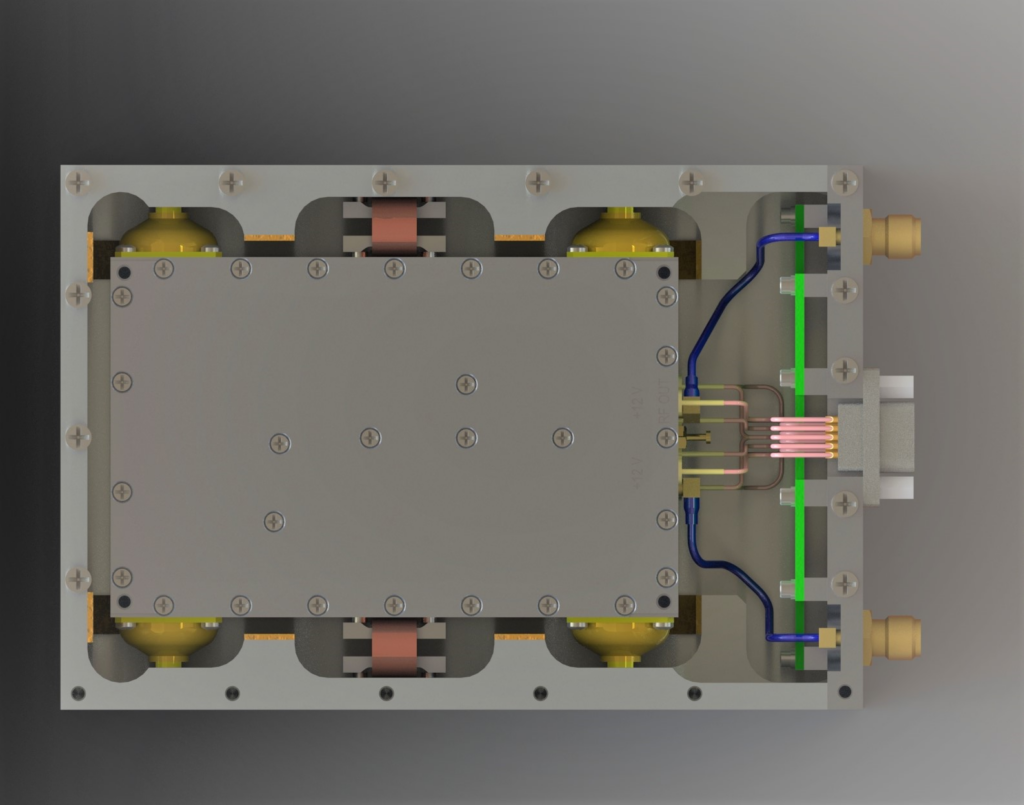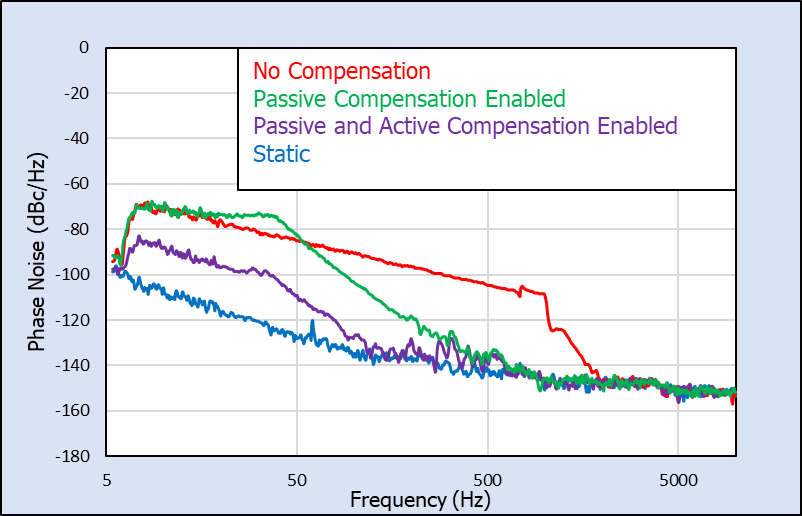When it comes to frequency control, achieving precise timing and synchronization is critical. However, numerous factors can degrade the performance of time-sensitive applications, and one such factor is dynamic phase noise. In this technical article, we will delve into the concept of dynamic phase noise, explore its effects on radio frequency and microwave system performance, and discuss several techniques that engineers can employ to mitigate its impact.
Before diving into dynamic phase noise, let’s start with a brief overview of phase noise itself. Phase noise refers to undesired fluctuations in the phase of a signal, which cause timing uncertainties and degrade short term stability. For example, a standard mechanical clock exhibits phase fluctuations any time its tick (phase) deviates from 1 second. Figure 1 illustrates what such a clock would look like if snapshots were taken every second, as determined by a more trusted clock; in practice, phase fluctuations are measured relative to at least one reference signal – a signal with better phase noise than what’s being measured. All real-world signals exhibit phase noise, which can be periodic or random. Phase noise can also be caused by oscillators, amplifiers, and non-linear devices such as multipliers and dividers, all of which can exhibit increased phase noise over temperature and vibration.

Dynamic phase noise specifically refers to phase fluctuations induced by mechanical vibration. Many applications for frequency sources involve environments with significant vibration, which can cause higher phase noise than what may be seen in a static lab environment. This is primarily due to the effect that vibration has on oscillators, especially quartz crystals. For instance, when crystal oscillators are subjected to acceleration caused by a physical force, they experience a frequency shift in their output. Therefore, an externally applied vibration causes an oscillator’s frequency to modulate; since phase is defined as the integral of frequency, the phase modulates as well, increasing phase noise. This modulation is directly proportional to the acceleration seen by the oscillator, so as vibration increases in magnitude, the more phase noise degradation it causes. Therefore, dynamic phase noise can dramatically impact the performance of time-sensitive applications.
Dynamic phase noise can have several detrimental effects on system performance, including:
Jitter: Fluctuations in the phase of a signal introduce jitter, a representation of phase noise in the time-domain that causes inaccuracies in time measurements and synchronization. This can be particularly problematic in radio frequency and microwave systems, where precise timing is critical.
Spectral Regrowth and Spectral Purity: Dynamic phase noise can spread the energy of a signal from its intended frequency across the spectrum, flooding adjacent frequencies. This spectral spreading can interfere with a receiver’s detection of small signals and corrupt neighboring channels. Dynamic phase noise can be the biggest threat to RF systems that rely on the ability to distinguish between desired signals and noise.
Bit Error Rate (BER): In digital communication systems, dynamic phase noise can increase the bit error rate, leading to data corruption and reduced system performance. This becomes more pronounced as a system’s bandwidth and data rates increase.
To mitigate the impact of dynamic phase noise and maintain high-performance levels, various techniques can be employed:
Low-Noise Designs: Implementing oscillators with low acceleration-sensitivity crystals can directly minimize the impact of dynamic phase noise in a system. In addition, careful component selection and circuit layout can significantly reduce the noise contribution from other sources and isolate vibration from the oscillator.
Passive Vibration Isolation: Shock mounting is the most common method used to isolate vibration from an oscillator. By varying shock mount stiffness and payload mass, RF engineers can design systems that attenuate vibration over a long frequency range. This results in a reduction of the corresponding dynamic phase noise. Passive vibration isolation can perform well up to high frequencies but is limited at lower frequencies where shock mounts can resonate and amplify vibration content. Nonetheless, this method can well improve dynamic phase noise performance.

Bootstrapping: This technique, pioneered by the RF engineering team at Quantic Wenzel, uses two rugged crystal oscillators to compensate dynamic phase noise. A voltage representing the phase difference of the two oscillators, much like what a phase locked loop uses to phase lock, is used to create phase fluctuations that counteract those caused by vibration in real time.
Active and Passive Vibration Compensation: This technique pairs together accelerometer and shock mount-based solutions to yield synergistic benefits. Active vibration compensation utilizes accelerometers to detect the acceleration seen by an oscillator and directly negates its effect on dynamic phase noise. Unlike passive compensation, active compensation is not limited at low frequencies. Therefore, the combined effect of the two techniques attenuates vibration over a fuller frequency range, significantly improving phase noise performance, see Figure 3.

Digital Signal Processing (DSP): Advanced DSP algorithms can be employed to compensate for dynamic phase noise in digital communication systems. Techniques such as phase estimation, equalization, and adaptive filtering can help mitigate the adverse effects of phase noise on data transmission.
Adaptive Filtering and Equalization: In systems where dynamic phase noise affects signal quality, adaptive filtering and equalization techniques can be employed to compensate for the distortion caused by phase fluctuations. These methods actively adjust the system parameters based on the observed phase noise characteristics.
Dynamic phase noise is a significant challenge in modern radio frequency and microwave systems, particularly in high-speed communication and timing-critical applications. Understanding its effects and implementing suitable mitigation techniques are crucial for maintaining accurate timing, spectral purity, and data integrity. By employing low phase noise design practices and mitigation techniques, RF engineers can effectively reduce the impact of dynamic phase noise, enabling robust and reliable system performance in the face of harsh environmental conditions.